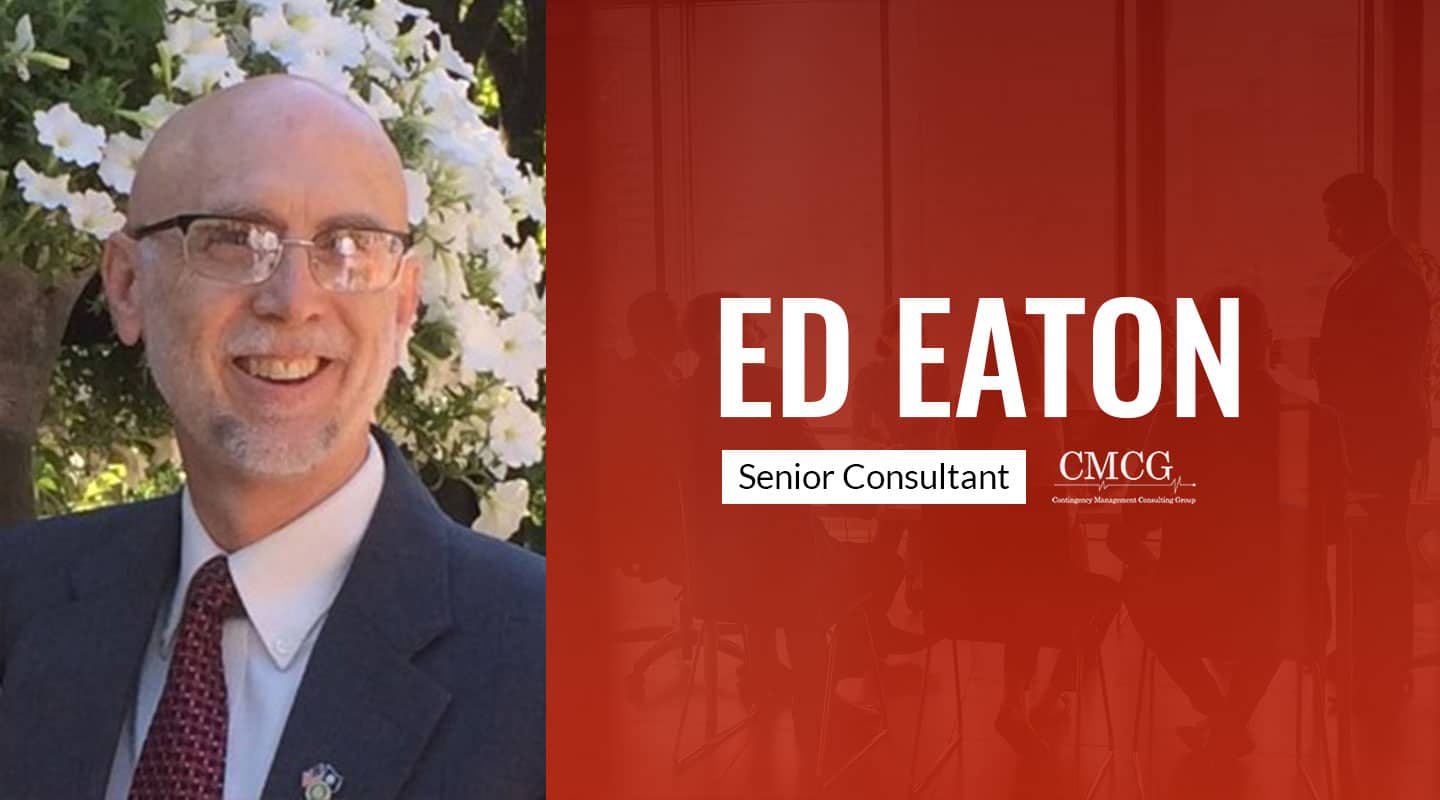Many disciplines lay rightful claim to the term crisis management. When negative events occur, M Booth helps clients manage reputation and brands. However, to be effective, our team must understand the approaches of experts steeped in emergency management and broader risk management. We have a strategic partnership with these experts at the firm Contingency Management Consulting Group (CMCG).

Below, J.D. interviews Ed Eaton, a Senior Consultant at CMCG. Ed built his career on deploying best practices in crisis management and helping organizations recover from flashpoints. The conversation highlights several disconnects between our disciplines and recommendations to prompt greater alignment for the future.
only a few organizations fully align their risk/emergency management structures with the reputation management function.
J.D.: Ed, we’ve talked about this fact for years: too few organizations fully align their risk/emergency management structures with the reputation management function. What’s your take on the root cause? Lack of understanding? Lack of resources/time? Cultural differences between risk and corporate communications pros? Or miscalculation of the benefits of alignment?
EATON: Collaboration with leaders in risk and reputation management can come about in two ways. First, good planning can result from the efforts of a strong leader who can bring together both sides. This could be driven from the C-Suite or the legal department. Second, and less desirable, collaboration can come about at the 24th hour after a crisis hits. Different types of incidents at different scales can require vastly different resources, focus and energy, involve more or fewer people in a different pattern of locations, and require more information sharing and collaboration to determine the right responses.
…developing a plan is not the end of the process. Documents do not care for people or interact to protect your organization or tell your story. People must do that.
Its’s critical to understand that developing a plan is not the end of the process. Documents do not care for people or interact to protect your organization or tell your story. People must do that. Normally that includes people from several departments and locations that must understand how the organization intends to function when bad things happen. That takes training and rehearsing. Scoping how much you intend to prepare – what your baseline level of preparedness is – drives how often teams are engaged in preparing.
clearer separation of emergency/reputation crisis communications.
J.D.: Alignment between both functions is important. But in my opinion, so is a separation of communications goals. Let’s use a facility fire as an example. Too many risk plans assign emergency communications responsibility (e.g., “get out of the building!” or “shelter in place!”) to corporate communications teams. This responsibility to alert employees should reside with safety/security personnel. In addition, corporate communications leads are sometimes tasked as “recorders of the facts” from crisis management team meetings, like a well-paid stenographer! Instead, the corporate communications team should prepare to address questions that are more pertinent to protecting reputation, like addressing how the fire started in the first place, impact to the community, impact to the business and employees, etc. What’s your take on this? Should we advocate a clearer separation of emergency/reputation crisis communications?
EATON: Well, this is the focus of our crisis management practice; helping organizations define their response organization structure and practices. I suggest that crisis management is about streamlining communications and decision-making during emergencies or business crises. One element of that design is assigning specific roles to people in departments to complete important functions. An example would be reserving information management for the team roles related to capturing and sharing information, decisions, tasks and similarly important information. Although there are some organizations that assign communications staff to this function, I often see legal staff involved as well as assistants to executives or senior managers. The key is assigning and then preparing people to fill their role.
Note, there are typically three layers of teams in a common crisis management structure: the executive/strategic layer, the managerial/tactical layer, and the operational/incident layer. An organization may have several different executive teams (e.g., HQ, divisional, and/or regional teams) all working on supporting the incident response with the teams closer to the problem. But they must also focus on the strategic impacts and implications of the incident, which would normally include a reputation component. The executive team functions as the brain of the organization in protecting the enterprise and organizing the response from that scale.
How do managerial/tactical and operational/incident personnel play a role in EMERGENCY/RISK MANAGEMENT?
J.D.: I agree because the executive/strategic team has the broad-view situational awareness that’s required for strong reputation management. However, I think the managerial/tactical and operational/incident personnel must continually inform the process. And at times, they may play a role in communicating to stakeholders to simultaneously manage the emergency and reputation. Example: in the aftermath of a site-level shooting, both the plant manager and the local security personnel may have to communicate for dual purposes – whether it is to reassure workers that the facility is safe, or to assuage the local community that the organization will continue to focus on site safety/security. Agree?
EATON: Yes – absolutely, but I think there are two aspects to this. First, stakeholder communications may involve logical roles both in the immediate response, and in addressing broader impacts. Consider those involved with communicating to a partnering business that will be affected by the situation. That person will have to be incorporated into the structure somewhere to prepare them for their role – and that could be the executive level communications lead or a managerial level addressing business continuity response. Second, gathering, synthesizing and sharing information is always important so the organization can make sense of it. This is one of the tasks, typically given to the managerial level team: gather all the relevant information and organize it so others can review and come to rational conclusions. I love to see organizations assign Information Management roles and define processes and develop tools. In challenging or long-term situations, information management is a critical function.
Learn by guided emergency and reputation communications experience.
J.D.: We have worked together to conduct exercises for several clients. I’ve always admired how you integrate both the emergency and reputation communications needs into these “rehearsals” as you call them. Care to share some tips on this?
EATON: Our perspective is that guided experience is often the best teacher. We take an all-hazards approach. We want teams rehearsing enough to build muscle memory for the various processes they will need to perform under different types of circumstances. We focus on developing our clients’ response capabilities and capacities at various scales or layers in the organization rather than focusing on specific risks an organization may be concerned about. We try to develop in them the ability to address various aspects of response. How do you assess a problem? Are you ready to activate? What teams are included? How do you collaborate across functions? Across locations? What happens when key people can’t participate? Our exercises are designed to provide opportunities for team members to complete their assigned roles – whatever they are.
successful crisis management – an approach, not a destination.
J.D.: Do you agree with the notion that great crisis management capabilities are never “set,” and that they must continually evolve? It’s an approach, not a destination.
EATON: Absolutely – though I may add a few other terms here – perhaps it’s a journey or process. Organizations and plans evolve and adapt over time and can be identified along a maturity curve. We use the emergency management cycle to help clients evaluate their circumstance and capabilities, update their plans and procedures, train their teams, run them through their paces in exercises, and then assist in documenting and applying the lessons learned. This is a foundational process that provides for continuous improvement, refreshing existing team members and getting new members up to game speed.
M Booth maintains several strategic partnerships like the one we enjoy with CMCG, to be able to deliver the most comprehensive issues/crisis management solutions to brands and organizations in need. Stay tuned for more information through future POVs and strategic-partner interviews!




